Overview of Ginseng
Ginseng is the best-developed and most industrialized variety among all traditional Chinese medicinal herbs. It boasts the most advanced cultivation and processing techniques and is rightfully known as the king of all herbs, the king of all medicines, and the king of all supplements.
Changes in Ginseng Production Areas
Originally, ginseng in China was found in Shangdang and Liaodong. During the Tang Dynasty, the main production areas of ginseng were the Taihang and Yan mountain ranges, primarily distributed in central and southern Shaanxi Province and the western and northern parts of Hebei Province. In the Song Dynasty, the main production areas of ginseng expanded eastward, primarily distributed in Shanxi, Hebei, and Shandong regions. During the Ming Dynasty, the main production areas of ginseng noticeably moved northward, crossing the Yan Mountains and entering the northeastern region. By the Qing Dynasty, the main production areas of Chinese ginseng had developed into the Changbai Mountain area. Still, the quality of ginseng from Korea, known as “Heavenly Ginseng,” was considered superior.
Morphological Characteristics of Ginseng at Different Growth Stages
Ginseng is a slow-growing plant. In its first year, the above-ground part of the ginseng plant has only three small leaves, commonly called “three flowers.” In the second year, the above-ground part consists of a palmate compound leaf with five small leaves, widely called “five leaves.” In the third year, ginseng has two palmate compound leaves, known as “two horns.” It has three palmate compound leaves in the fourth year, called “candelabra.” Five and six-year-old ginseng plants have four to five palmate compound leaves, known as “four or five batches of leaves.” Ginseng older than six years may also have six palmate compound leaves, but these are rare, with a maximum of seven batches of leaves observed.
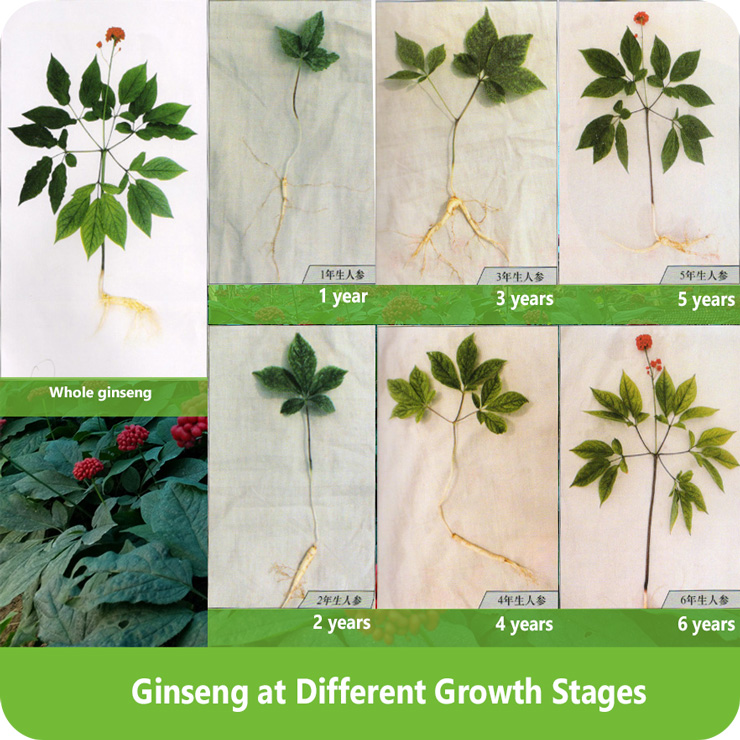
Main Testing Indicators for Wild Ginseng Raw Material
Main Testing Indicators:
- Rb1 ≥ 0.60%
- Re + Rg1 ≥ 0.40%
- Total Saponins ≥ 4.40%
Classification of Ginseng Based on Root Morphology:
- Large Ma Bud (大马芽): The main root is thick and short, with a short and thick rhizome. The overwintering bud is large, the crown is large, the root base is thick, there are many fine roots, the plant is tall, and the yield is high. (The content is also the highest: partly due to the high proportion of fine roots and partly due to inherent factors, but this is not entirely certain—it’s just a trend to be understood.)
- Second Ma Bud (二马芽): Compared to the Large Ma Bud, the main root is longer, the rhizome is slightly longer and thinner, the crown is small, the overwintering bud is small, there are fewer branch roots, and the yield is low.
- Round Stem Round Bud (圆膀圆芽): Compared to the Second Ma Bud, the rhizome is longer, the root base is round, the root shape is attractive, the plant is smaller, and the yield is slightly lower.
- Long Neck (长脖): This category is divided into Joint Crown and Leather Crown. Compared to the first three types, the rhizome is thin, the fine roots are long, growth is slow, and the yield is the lowest.
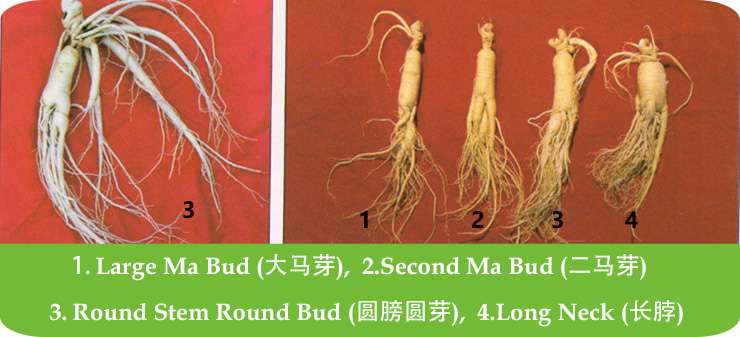
The Current State and Hazards of Harmful Substance Residues in the Ginseng Industry Overview
Currently, the main challenge for Chinese plant extract products in the international market is safety testing. In recent years, countries and regions such as Europe, the United States, Canada, and Japan have successively established organic agriculture regulations, standards, and laws to certify health products. Routine testing of conventional plant extracts exported from China has revealed that pesticide residues, heavy metal content, sulfur dioxide residues, plasticizers, benzo[a]pyrene, dioxins, and aflatoxins exceeding the limits are the main issues. Pesticide, heavy metal residues, and other residue problems have affected the entry of Chinese plant extract products into the international market, especially the EU market.
Types of Harmful Substance Residues in Ginseng Extracts
- Pesticide Residues: Insecticides, fungicides, acaricides, rodenticides, herbicides.
- Plasticizer Residues: Phthalate compounds.
- Heavy Metal Residues: Lead, arsenic, mercury, cadmium, copper, etc.
- Organic Solvent Residues: Classified by toxicity into three categories. First-class: highly toxic, avoid use; second class: daily allowable exposure limit; third class: not to exceed 0.5%.
- Chemical Substance Residues: Benzo[a]pyrene, dioxins, etc.
- Microbial Residues: Bacteria, molds, aflatoxins, etc.
Production Technologies for Handling Harmful Substance Residues in Ginseng Extracts
- Supercritical Fluid Extraction: No solvent residue, short extraction time, high efficiency, good reproducibility.
- Accelerated Solvent Extraction: Generally conducted at high temperatures and pressures. Uses small amounts of organic solvents, and high efficiency, but the equipment is relatively expensive.
- Solvent Extraction: Time-consuming, large solvent consumption, reagent residues; currently the most commonly used method.
- Dispersive Solid-Phase Extraction Adsorption: Directly adds adsorbent to the extract to purify pesticide residues. Methods include resin adsorption, molecular imprinting technology, salting-out method, molecular sieves, etc.
Differences Between Total Saponins in Ginseng Root and Ginseng Stems and Leaves
Total Saponins in Ginseng Root
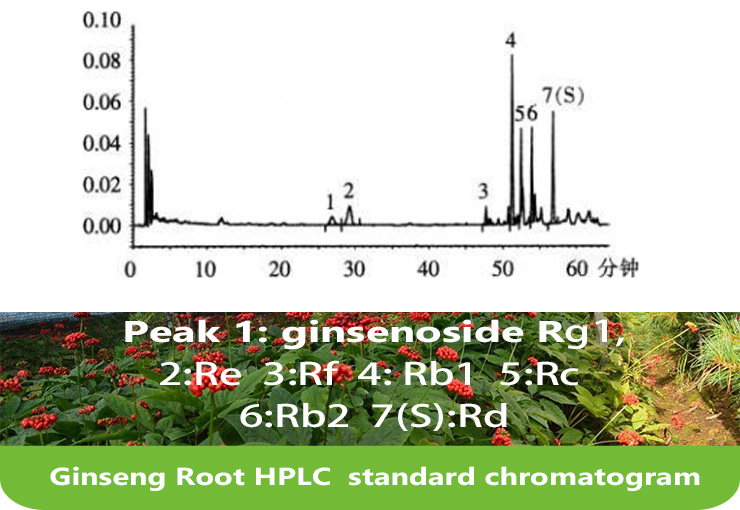
The proportion requirements for individual saponins in ginseng root extract are:
- The ratio of Rb1 to Rg1 is greater than 2.
- The ratio of Rb2 to Rb1 is greater than 0.4.
- The proportion of Re among the seven individual saponins is between 14.33% and 20.4%.
- The proportion of Rb1 is between 17.47% and 30.27%.
Total Saponins in Ginseng Stems and Leaves
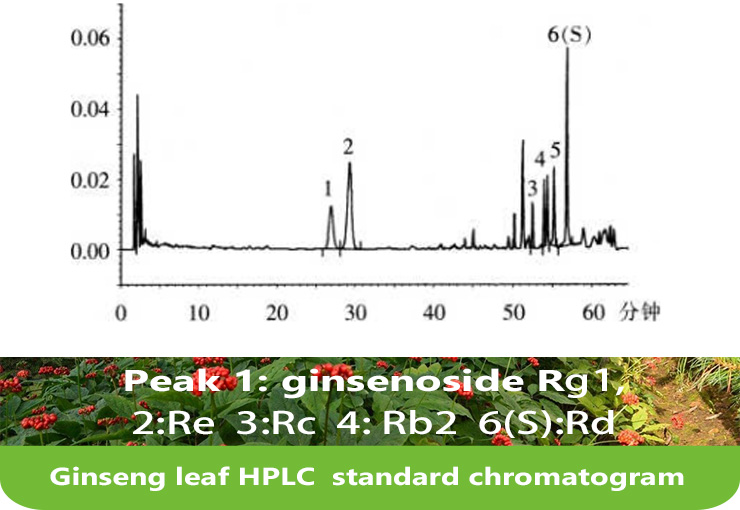
The proportion requirements for individual saponins in ginseng stem and leaf extract are:
- The ratio of Rg1 to Rb1 is between 4 and 6.5 to 1.
- The proportion of Re among the seven individual saponins is between 40.00% and 46.00%.
- The proportion of Rb1 is around 3%.
Differences Between Ginseng and American Ginseng
Ginseng contains a unique component, Rf, while American ginseng contains a unique component, pseudo-ginsenoside F11. Additionally, the proportions of individual monomers differ: in ginseng, Rb1 accounts for 17.47% to 30.27% of total saponins, while in American ginseng, it ranges from 35% to 43%, with a Re: Rg1 ratio greater than 5.
Pharmacological Effects and Applications of Ginseng Extracts
Ginseng, as a precious traditional natural plant for nourishment, possesses the effects of replenishing vitality, nourishing fluids, and calming the mind. The active components in ginseng are ginseng polysaccharides and ginsenosides. Ginseng contains various sugars, including monosaccharides, oligosaccharides, and polysaccharides. Among them, ginseng polysaccharides are one of the active components of natural plant ginseng. They are high-molecular-weight glucans that can exert anticancer effects and enhance immune function. Ginsenosides have anti-hypoxic, anti-fatigue, and anti-aging effects, can improve and enhance memory function, exhibit bidirectional immune regulation, reduce blood lipids, and have anti-arrhythmic and anti-myocardial ischemia effects.
These extracts can be used in the healthcare products, food, and cosmetics industries. In health food products, they can be formulated into anti-fatigue, anti-aging, and memory-enhancing supplements. In the cosmetics industry, they can be used to formulate products for spot removal, invigoration, wrinkle reduction, activation of skin cells, and enhancement of skin elasticity. Additionally, they can be used as additives in the food industry.
Analytical and Testing Techniques for Ginseng Products
- Detection of Ginsenosides: HPLC (using seven ginsenoside monomers as controls).
- Detection of Ginseng Polysaccharides: HPLC (hydrolysis of polysaccharides followed by derivative formation), UV (phenol-sulfuric acid method), measurement of average molecular weight.
Composition of Ginseng Polysaccharides: From left to right: mannose, rhamnose, glucuronic acid, glucose, galactose, arabinose.
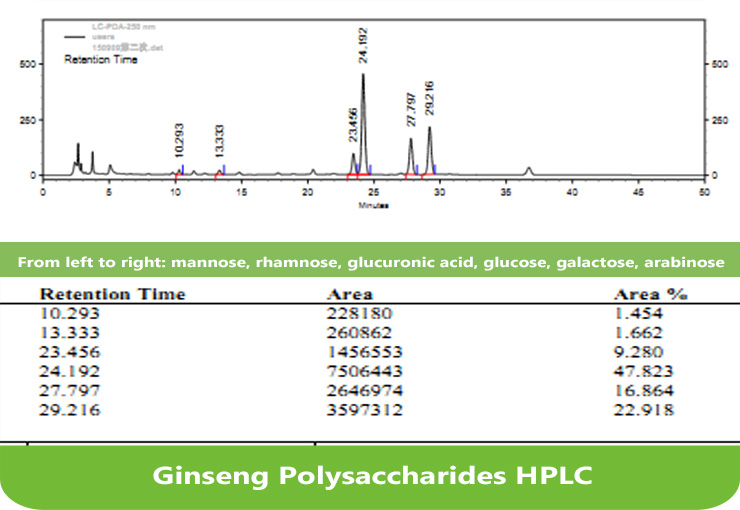
Qherb Ginseng Products Specifications
- Low pesticide residue ginseng root extract, primarily composed of ginsenosides.
- Ginseng polysaccharides.
- A mixture of ginsenosides and ginseng polysaccharides.
- Low pesticide residue ginseng stem and leaf saponins.
- Ginseng dietary fiber.







